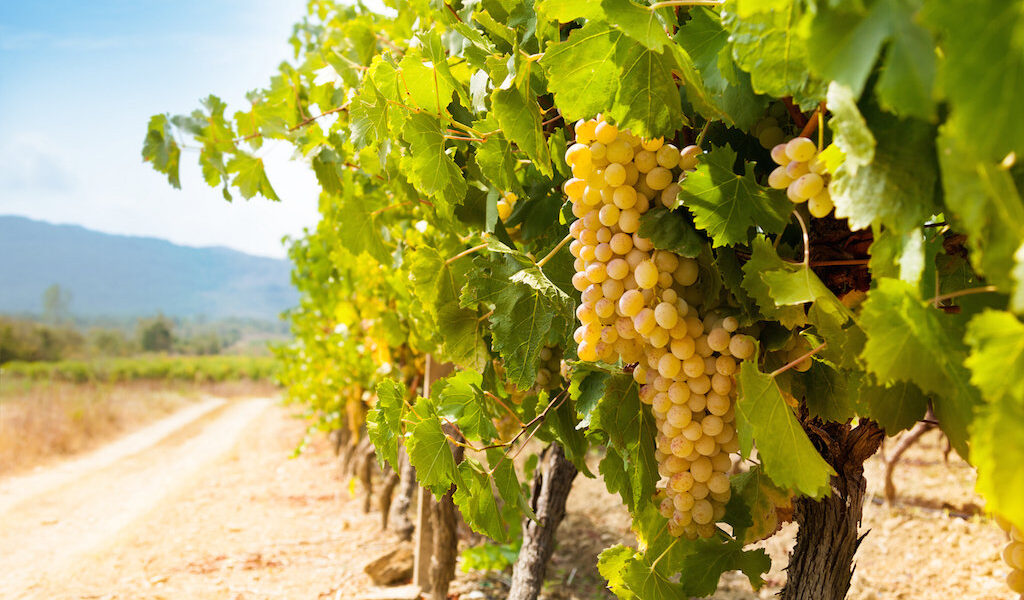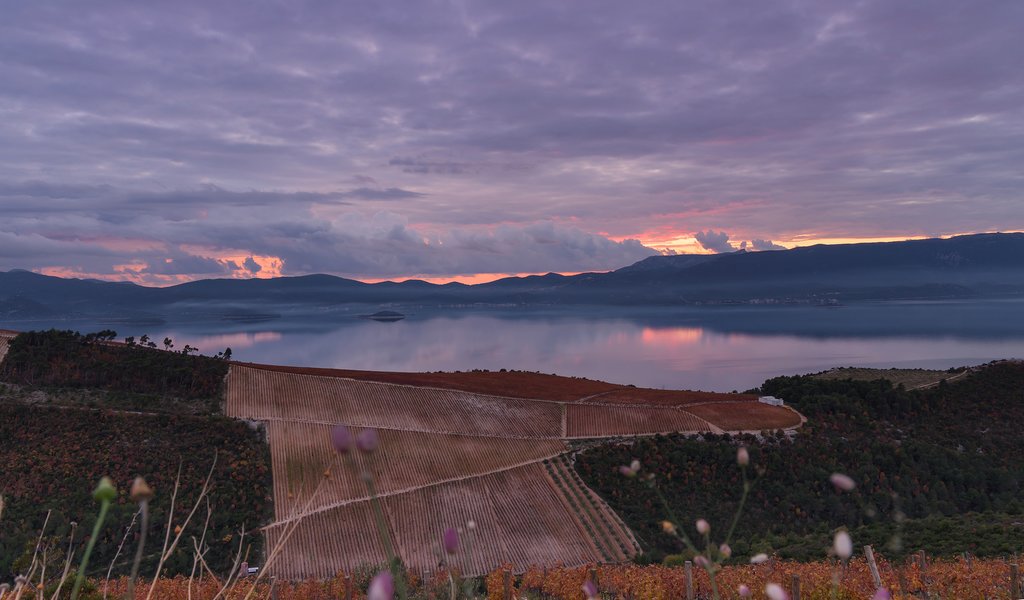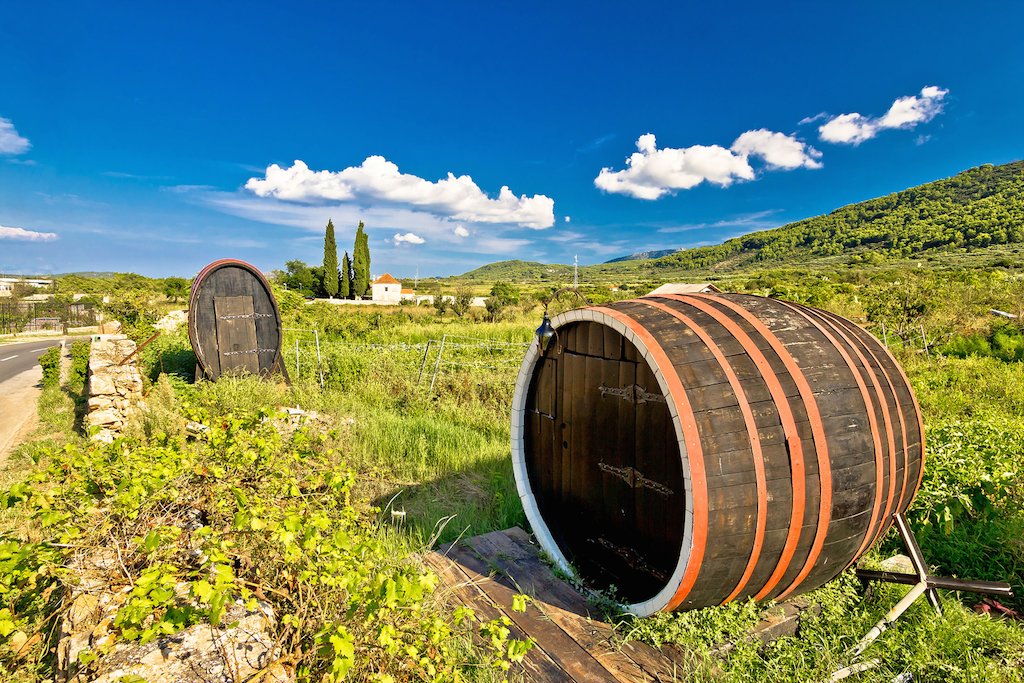
Istria, one of Croatia’s premier winemaking regions, was named one of the 2015 World Top 10 travel destinations by Wine Enthusiast magazine. But Istria is just one of the dozens of wine-producing locations in Croatia. Because of its small geographically-defined nature, the wine regions offer many tours and tastings, most of which are accessible by bike, a perfect way to sip your way through some of the country’s best wine. _x000D_
## **Unveiling the Wine-Soaked Secrets of Croatia**
Croatia, a land of stunning coastlines, rich history, and vibrant culture, holds a delightful secret for wine enthusiasts: a thriving and diverse wine scene that spans its varied regions. From the sun-kissed peninsula of Istria to the fertile plains of Slavonia and the captivating islands of Dalmatia, Croatia offers a sensory journey through its unique terroir and winemaking traditions. Prepare to be inspired as we delve into the depths of Croatia’s wine country, exploring its hidden gems and renowned vineyards.
### **Istria: A Tapestry of Flavors**
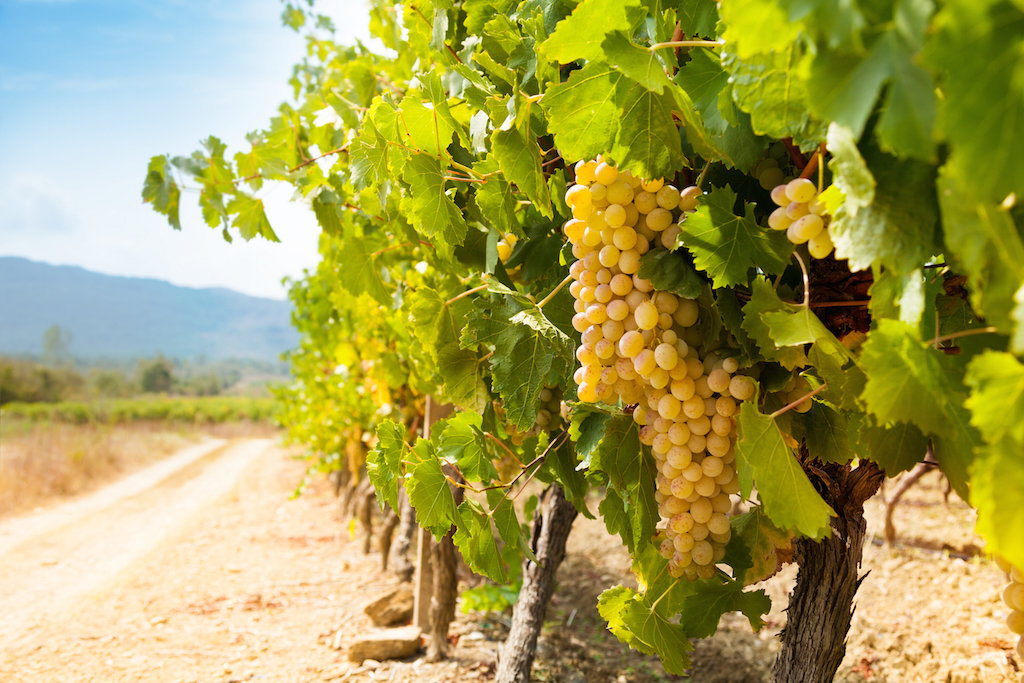
The story of wine in Istria, the northwestern heartland of Croatia, is an ancient one, etched in the soil by the hands of Greeks and Romans over two millennia ago. These early settlers recognized the region’s potential, planting the first vines that would eventually blossom into a rich winemaking heritage. The residents of this, the Adriatic’s largest peninsula, have dutifully carried on that legacy, nurturing and refining their craft through countless generations. Today, Istria boasts a vibrant community of roughly 120 small, family-owned wine producers, each adding their unique touch to the Istrian wine landscape.
For many years, the exquisite wines of Istria remained a closely guarded secret, known and enjoyed primarily within Croatia’s borders. However, in 2015, the world took notice. Wine Enthusiast magazine bestowed upon Istria the prestigious title of one of the top 10 wine travel destinations in the world, placing it alongside renowned regions such as Italy’s Piedmont and France’s Rhone Valley. This recognition served as a catalyst, drawing oenophiles from far and wide to discover the wonders of Istria.
Today, Istria welcomes visitors with open arms, inviting them to explore its rolling vineyards, discover ancient hilltop castles, and indulge in sublime cuisine. But beyond the picturesque scenery, it is the warmth and hospitality of the Istrian people that truly sets this region apart. Their genuine passion for winemaking and their welcoming nature create an unforgettable experience for every traveler. The area is particularly celebrated for its indigenous white wine, the *Malvazija Istarska*, a crisp and aromatic wine that perfectly captures the essence of the Istrian terroir. Complementing this delightful white are the robust red wines produced from vineyards with iron-rich *terra rossa* soils, where grapes like the endemic *Teran* and *Refošk* thrive, yielding complex and deeply colored wines.
To truly immerse yourself in the Istrian wine experience, consider visiting some of the region’s most exciting wineries and culinary destinations:
**Savudrija:** Venture to the extreme northwest corner of the peninsula, where you’ll find Savudrija, a charming coastal town that is home to the esteemed Moreno DeGrassi. At the DeGrassi winery, passion meets artistry as Moreno presides over his tasting room, *konoba* (traditional tavern), and cellar, crafting award-winning vintages that have garnered international acclaim. What makes DeGrassi’s story even more intriguing is the origin of his vines. Planted during Tito’s reign by a government co-op, these French grapes have matured over time, benefiting from DeGrassi’s exceptional talent as a vintner. The result is a collection of remarkable wines that capture the essence of Istrian terroir. While DeGrassi continues to primarily serve the Croatian market, the growing demand for his wines has led to ever-increasing exports, allowing wine lovers around the world to savor his creations.
**Momjan:** A short and scenic drive southeast of Savudrija, less than half an hour, will lead you to Momjan, a hilltop village that offers breathtaking panoramic views of the surrounding landscape and the shimmering Adriatic Sea. Momjan is steeped in history, divided into an upper section where the ruins of the 13th-century Momjan Castle stand guard over the terrain, and a lower section where the 15th-century St. Martin’s Church stands as a testament to the village’s enduring faith. Momjan is also considered the gateway to the wine and olive oil roads of northern Istria, making it an ideal starting point for exploring the region’s culinary treasures. Here, you’ll find the renowned Kozlović winery, owned and operated by the visionary Gianfranco Kozlović. Gianfranco’s dedication to his craft and his unwavering pursuit of excellence have earned him numerous accolades, including the distinction of being the first Istrian winemaker to win a national award in 1998, when his *Malvazija* was crowned the best white wine in Croatia. The Kozlović winery warmly welcomes visitors for tours and tastings, offering an immersive experience that reveals the passion and artistry behind their exceptional wines. Remember to call ahead and make reservations, as demand for these experiences is high.
**Expert Tip for Momjan:** For a unique and adventurous experience, plan your visit to coincide with the annual Bike-Wine Marathon held in Momjan every November. This event celebrates the town’s patron saint, St. Martin, who also happens to be the patron saint of wine and wine growers. The marathon offers a festive atmosphere where participants can sample the new vintage, similar to the celebration of *Beaujolais Nouveau*, while enjoying the stunning scenery of the Istrian countryside.
Just outside Momjan, along the winding road that leads south toward Buje, you’ll discover the Kabola winery, a family-run estate presided over by owner Marino Markežić. Kabola sets itself apart with its warm hospitality, employing English-speaking staff who are eager to welcome drop-in visitors and share their passion for winemaking. In addition to classic Istrian wines like white *Malvazija* and red *Teran*, Kabola boasts a small wine museum, a tasting room, and Marino Konoba, a Michelin-star-worthy restaurant that showcases the region’s culinary excellence.
**Expert Tip for Istria:** Istria is renowned for its truffles, both black and white varieties, which grow abundantly in the region’s forests. During the fall months, many towns host festivals that celebrate this culinary delicacy, offering visitors the opportunity to savor truffle-infused dishes and learn about the art of truffle hunting. Consider embarking on a truffle hunting adventure in the forests outside Motovun, a medieval hilltop town, to experience the thrill of discovering these hidden treasures.
### **Slavonia: A Symphony of Flavors**
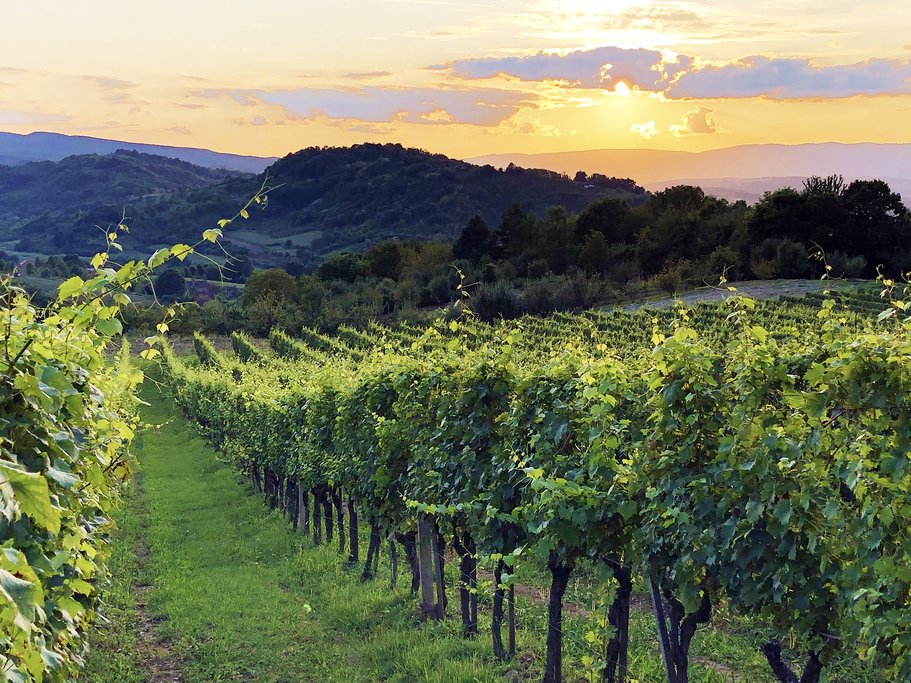
Venture 100 miles east of Zagreb, and you’ll find yourself in Slavonia, a region defined by the fertile Pannonian Plain that stretches all the way to the mighty Danube River. Here, the towns and villages of Požega, Kutjevo, and Baranja offer a captivating blend of historical perspective and rewarding wine touring experiences. This part of western Slavonia boasts nearly 30 wine cellars spread across three distinct wine roads, each with its unique character and charm. In Slavonia, *Graševina* and *Traminac*, more commonly known as Gewürztraminer, reign supreme as the region’s primary grape varieties, lending their distinctive aromas and flavors to the local wines.
**Požega-Pleternica:** Once known as *Vallis Aurea* (Golden Valley) by the Romans who settled there, Požega-Pleternica is a basin surrounded by the rolling Slavonian mountains, a region that has been producing wine for centuries. Today, it is experiencing a renaissance, emerging as a vibrant center for food and wine tourism.
The Požega-Pleternica *vinska cesta* (wine road) winds its way through the picturesque countryside, encompassing seven wineries spread across 390 acres. For those seeking a more active experience, consider hiking or biking along the route, even venturing up Požeška Gora to take in the panoramic views.
**Kutjevo:** The Kutjevo wine road, covering twice as much territory as Požega-Pleternica (800 acres), beckons with its impressive collection of 20 wine cellars, some of the region’s oldest and most acclaimed. One of these cellars dates back to the 13th century, offering a glimpse into the region’s rich winemaking history. Kutjevo serves as a gateway to the breathtaking Papuk Nature Park, a haven for nature enthusiasts. Visitors can book organized tours or cycle along six trails, three within Papuk and three in Kutjevo. Hiking and rock climbing are also popular activities here, or simply revel in the endless forested landscape and the park’s diverse collection of rocks and fossils.
**Pakrac:** The vineyards of Pakrac bear the scars of the Homeland War, having been close to the front lines. Recovery is ongoing, but visitors can witness their progress and explore the nearby Lipik’s thriving equestrian center. Several eco-farms welcome tours, offering insights into sustainable agriculture. Others offer fishing, biking, and the opportunity to visit a goat farm and an apiary for a firsthand look at the sources of sweet and savory products like goat cheese and honey.
**Baranja:** Požega may have its Golden Valley, but Baranja, in the northeastern part of Slavonia, has its *Mons Aureas* (Golden Hills). This name was bestowed upon the region by the Romans, who recognized the suitability of Baranja for growing grapes as they established settlements along the Danube.
The legendary Iločki Podrumi (Ilok Cellars) are located in Ilok, a town that holds a significant place in history as one of the first towns entered by Serbian forces when they crossed the Danube on their way to war in 1991. Most of the 20 wineries in Baranja are family-owned and small, offering a personal and authentic experience. Many of these wineries also provide food and lodging, allowing visitors to fully immerse themselves in the Baranja lifestyle.
Baranja’s proximity to Kopački Rit Nature Park, with its inviting biking and hiking routes, makes it easy to combine a nature walk or ride with a few winery stops. With its numerous local organic farms, Baranja has become a popular destination for agrotourism, and it was one of the first areas to develop trails for cycling tourism.
**Expert Tip for Baranja:** Many places in Baranja rent bikes. County officials are collaborating with neighboring Hungary to establish an international bike rental service, making it even easier for visitors to explore the region’s scenic landscapes and charming villages.
### **Pelješac: Where the Land Meets the Sea**
Prepare to be amazed by the Pelješac peninsula, a narrow spit of land that juts into the Adriatic Sea west of the mainland and north of Dubrovnik. Its hot and rocky terrain might seem inhospitable for growing anything, but this seemingly barren landscape produces magnificent grapes that give rise to some of Croatia’s most celebrated winemakers, including the producers of *Dingac* and *Postup*. The world-renowned Grgić, the birthplace of the Grgich wine label from California, is located in the village of Trstenik, a testament to the region’s exceptional winemaking potential.
For a truly unique experience, venture to Indijan Winery, where wine is sold on the honor system. Bring your own container, fill it with as much vino as you desire from the outdoor barrels, and leave money in return. This unusual winery has been in operation for ages, embodying the spirit of trust and community. Throughout the Pelješac peninsula, you’ll also find more traditional wine cellars with tasting rooms, although most require advance notice for tastings.
And if you find yourself needing a break from all that sipping, take a refreshing dip in the Adriatic Sea, easily accessible from almost anywhere on the peninsula.
**Expert Tip for Pelješac:** Biking is a popular way to explore the Pelješac wine route, but be prepared for extremely hilly terrain that will challenge even the most experienced cyclists.
### **Dalmatian Islands: A Taste of History**
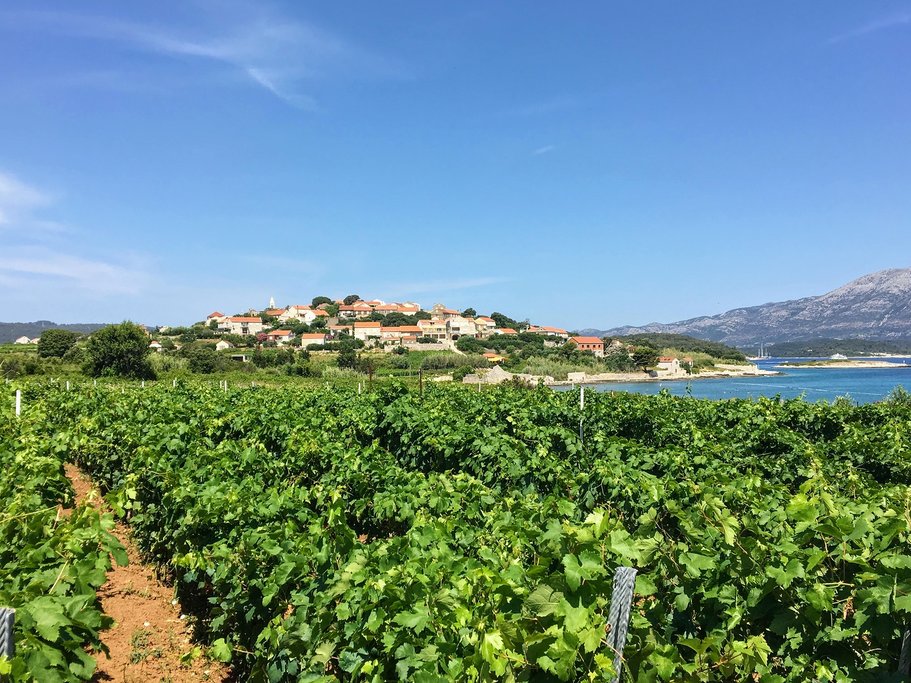
The “big three” wine-producing islands of southern Dalmatia – Vis, Korčula, and Hvar – share several common threads:
* They all produce excellent wines, each with its distinctive character and flavor profile.
* Their largest population centers are located at extreme ends of their respective islands, creating a unique geographical dynamic.
* They were once inhabited by the ancient Greeks, leaving behind a legacy of winemaking and cultural exchange.
* They are perfect for cyclists who want to explore the islands from end to end, with vineyards and wineries nestled mid-island, typically in valleys surrounded by hills, offering an interesting and doable ride, even for day-trippers.
Despite these similarities, each island possesses a distinct personality that sets it apart.
**Vis:** Vis, the smallest of the three islands, exudes an air of mystery. It is also one of the farthest from the mainland and the least touristy, thanks to Tito’s restrictions on visitors during World War II. Vis boasts spectacular secluded coves that lie in the shadow of jagged cliffs, a sophisticated dining scene, and an upscale yachting clientele. Intriguingly, there’s even a winery with World War II memorabilia left behind in one of Tito’s communication caves built into a hill. White wines made from the *Vugava* grape lead Vis’ wine production, showcasing the island’s unique terroir.
**Korčula:** Korčula is steeped in legend as the reputed birthplace of Marco Polo, although concrete proof remains elusive. With its walled city center and cobbled streets, it is the most medieval-looking of the islands, evoking the charm of Dubrovnik on a smaller scale. Korčula has earned a reputation for its excellent white wines crafted from the *Grk* and *Pošip* grapes, with Smokvica and Lumbarda standing out as the island’s best-known winemaking towns. Perched on a very hilly road with spectacular views of Smokvica’s vineyards is Vinarija Toreta, a regular stop for food-and-wine bike tourists.
**Hvar:** Situated just 20 miles off the coast from Split, Hvar has been a center of viniculture since the 4th century BCE, when the Greeks planted vines in the Stari Grad Plain, a UNESCO-protected site. Cyclists can enjoy a ride similar to Korčula’s, complete with vineyards, hills, and valleys. *Zlatan Plavac* is its signature grape, but Hvar may be more renowned for its wine drinking than its winemaking. The island is also famous for its lavender fields, luxurious hotels and villas, and its raucous celebrity party scene.
Croatia’s wine country beckons with its diverse landscapes, rich history, and exceptional wines. From the sun-drenched vineyards of Istria to the fertile plains of Slavonia and the enchanting islands of Dalmatia, a sensory adventure awaits every wine enthusiast. Raise a glass and savor the secrets of Croatia’s wine country, a destination that will inspire and delight your palate.
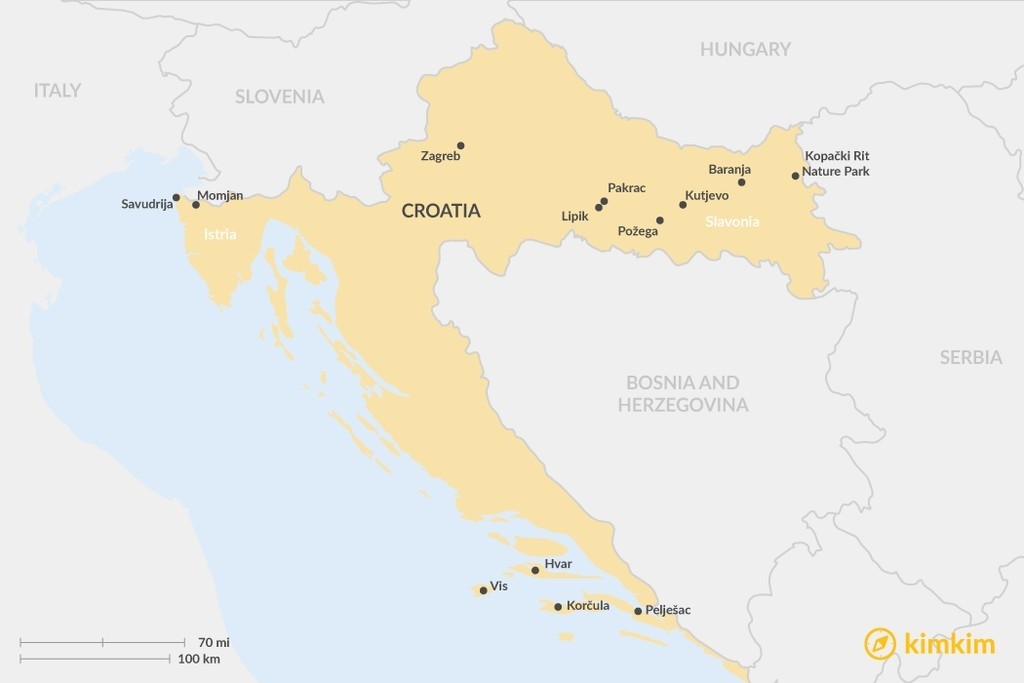
B-630

